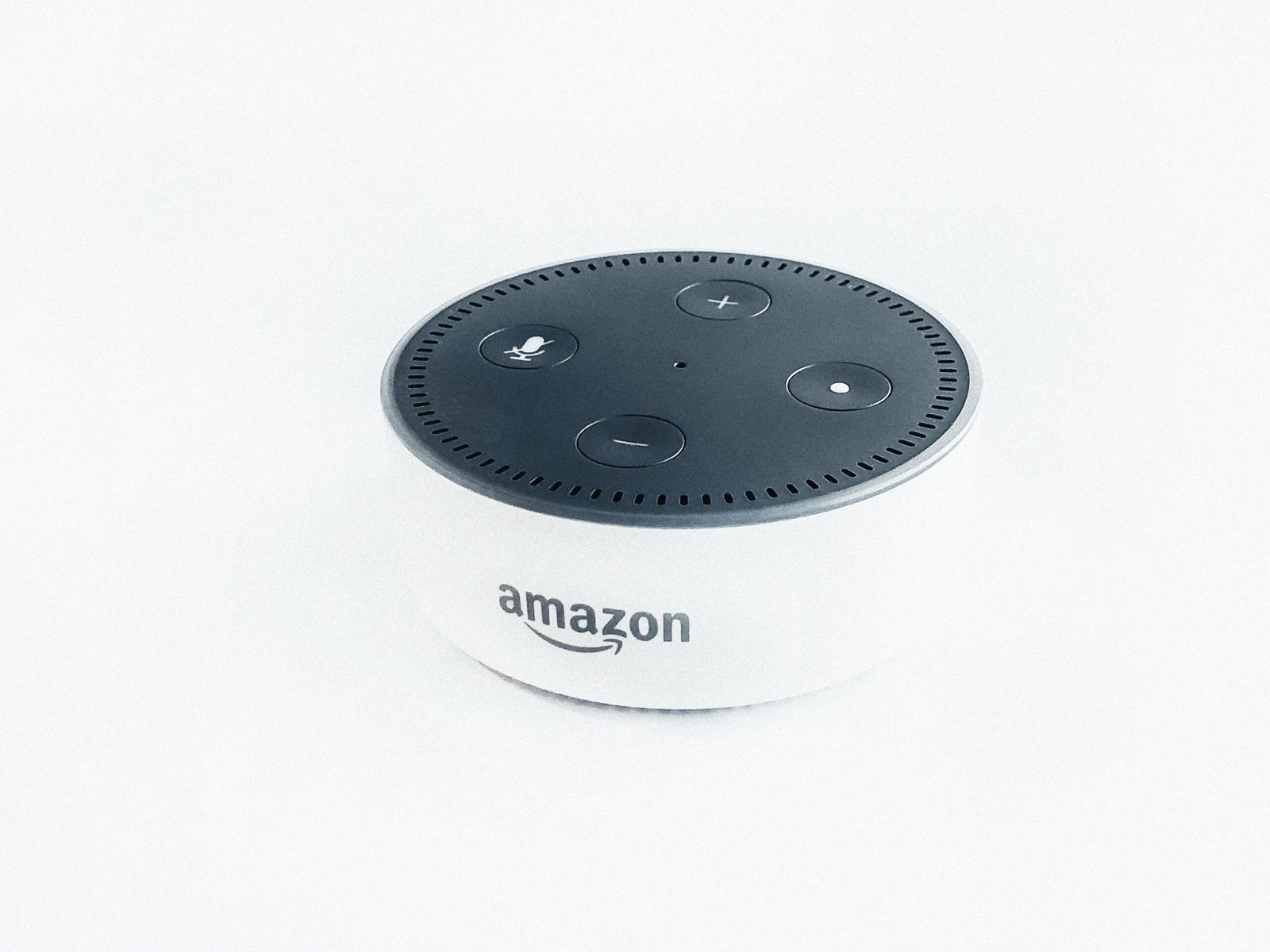
Introduction to Amazon Alexa
Amazon Alexa, a revolutionary voice-activated virtual assistant, has transformed the landscape of smart home technology since its launch in 2014. Developed by Amazon’s Lab126, Alexa was initially embedded in the Amazon Echo, a smart speaker designed to integrate seamlessly into users’ daily lives. Alexa’s sophisticated voice recognition and natural language processing capabilities enable it to comprehend and execute a broad spectrum of commands, making it an indispensable tool in the modern smart home ecosystem.
At its core, Alexa’s purpose is to provide users with a hands-free, intuitive means of managing various tasks through voice commands. This encompasses a wide array of functionalities, from controlling smart home devices and playing music to answering queries and setting reminders. By leveraging advanced machine learning algorithms, Alexa continues to evolve, learning from user interactions to improve accuracy and efficiency over time.
Alexa is not just confined to the Amazon Echo. It has become a central component in a range of Amazon’s smart home devices, including the Echo Dot, Echo Show, and Echo Studio. Its integration extends beyond Amazon’s hardware, with compatibility across numerous third-party devices, thereby cementing its role within the broader smart home ecosystem. This versatility allows users to create a cohesive, interconnected environment where various gadgets communicate seamlessly via Alexa.
Key features of Amazon Alexa include its ability to recognize distinct voices, facilitating personalized experiences for different users within the same household. Additionally, Alexa’s natural language processing enables it to understand and respond to complex queries, making interactions more conversational and user-friendly. With a rapidly expanding array of skills and capabilities, Alexa can perform tasks as varied as providing weather forecasts, controlling home lighting, managing shopping lists, and much more.
As we delve deeper into the wonders of Amazon Alexa, we will explore its myriad capabilities and practical applications, demonstrating how this innovative technology continues to redefine convenience and efficiency in our daily lives.
Key Features and Capabilities
Amazon Alexa, a voice-controlled intelligent assistant, offers a plethora of features and capabilities that have revolutionized the way we manage our daily lives. One of Alexa’s standout features is its extensive range of skills. These skills, akin to apps, enable Alexa to perform a wide array of tasks. From streaming your favorite music and providing weather updates to setting cooking timers and managing your to-do lists, Alexa’s skills are designed to cater to a diverse set of needs. For instance, with the Spotify skill, users can effortlessly play music from their favorite playlists, while the NPR News skill keeps them updated with the latest headlines.
Integration with other smart devices is another significant strength of Amazon Alexa. As a central hub for smart home ecosystems, Alexa can control a variety of devices such as lights, thermostats, and security cameras. For example, with compatible devices like Philips Hue lights, users can adjust lighting settings through simple voice commands. Similarly, integrating Alexa with smart thermostats like the Ecobee allows for seamless temperature adjustments, enhancing energy efficiency and comfort.
Daily task management is made remarkably efficient with Alexa’s capabilities. Users can set reminders, create shopping lists, and even schedule appointments, all through voice commands. Imagine needing a reminder to take medication – simply instruct Alexa, and it will ensure you’re notified at the appropriate time. This hands-free convenience is especially beneficial in busy households where multitasking is often necessary.
Moreover, Alexa excels in providing instant answers to a variety of questions. Whether you need a quick conversion of units while cooking or the latest sports scores, Alexa taps into its vast knowledge base to deliver accurate information promptly. Through third-party integrations, Alexa extends its utility even further. Skills from companies like Uber and Domino’s enable users to book rides or order food with minimal effort, showcasing the practical applications of this voice assistant in everyday scenarios.
In summary, Amazon Alexa’s key features and capabilities, from its extensive skillset and smart device integration to proficient task management and information retrieval, collectively enhance the efficiency and convenience of users’ lives. By embracing these capabilities, users can experience a more streamlined and interconnected lifestyle, demonstrating the transformative potential of this innovative technology.
Practical Applications in Everyday Life
Amazon Alexa has swiftly integrated into the daily routines of many users, providing seamless assistance in numerous aspects of life. One of the most prominent applications of Alexa is in home automation. By connecting smart devices, Alexa can control lights, thermostats, and security systems with simple voice commands, creating a more efficient and comfortable living environment. For instance, users can instruct Alexa to dim the lights for a movie night or adjust the thermostat before arriving home, making everyday tasks more convenient.
In terms of enhancing productivity, Alexa excels in managing schedules and reminders. Whether it’s setting up a morning alarm, scheduling meetings, or reminding to take medication, Alexa’s voice-activated capabilities ensure that users stay organized. For busy professionals, Alexa can sync with calendars and send notifications for upcoming events, effectively streamlining the daily workflow. One user testimonial highlights how Alexa helped maintain a balanced work-life schedule by sending prompts for breaks and exercise during prolonged periods of work.
Alexa also proves to be a valuable aide in the kitchen. With access to numerous recipes, the virtual assistant can guide users through cooking processes step-by-step. Alexa can also set timers, convert measurements, and create shopping lists, making meal preparation more efficient and enjoyable. A case study of a home chef revealed that Alexa not only saved time but also reduced the stress associated with multitasking in the kitchen.
In the realm of personal fitness, Alexa offers support through various fitness apps and routines. Users can request workout tips, track progress, and even partake in guided meditation sessions. One fitness enthusiast shared their experience of using Alexa to tailor daily exercise routines and monitor health metrics, which significantly improved their overall fitness journey.
These real-life scenarios and testimonials underscore the versatility and convenience of Amazon Alexa. From homes to offices, Alexa’s practical applications enhance everyday life, making it a valuable tool for modern living.
Future Developments and Innovations
As technology continues to evolve, Amazon Alexa is poised to undergo significant advancements in artificial intelligence, machine learning, and user interface design. These developments are expected to enhance Alexa’s capabilities, making the virtual assistant even more integral to daily life. One of the primary areas of focus for Amazon is the continuous improvement of Alexa’s AI, aiming to create a more intuitive and responsive user experience. With enhanced natural language processing and contextual understanding, Alexa will be able to engage in more complex and meaningful interactions with users.
Machine learning will play a crucial role in Alexa’s evolution, enabling the device to learn from user behavior and preferences. This will allow Alexa to provide highly personalized recommendations and automate routine tasks more efficiently. For instance, future iterations of Alexa could anticipate a user’s needs based on historical data, offering proactive assistance before a request is made. This level of predictive intelligence could revolutionize the way users interact with their smart homes, making everyday tasks more seamless and convenient.
In terms of user interface design, Amazon is likely to explore more advanced visual and tactile interfaces. Integrating Alexa with augmented reality (AR) or virtual reality (VR) could open up new avenues for interaction, providing a more immersive experience. Additionally, improvements in voice recognition technology will ensure that Alexa can understand and respond to a wider range of accents and dialects, making the assistant more accessible to a global audience.
However, these advancements are not without challenges. Privacy and data security remain significant concerns as Alexa becomes more embedded in users’ lives. Amazon will need to address these issues by implementing robust security measures and transparent data policies. Ethical considerations around the use of AI and machine learning will also need to be carefully managed to ensure that the benefits of these technologies do not come at the expense of user trust.
Overall, the future of Amazon Alexa looks promising, with innovations that will further enhance its functionality and integration into daily life. By addressing the associated challenges and ethical considerations, Amazon can continue to lead the way in the development of intelligent virtual assistants.

